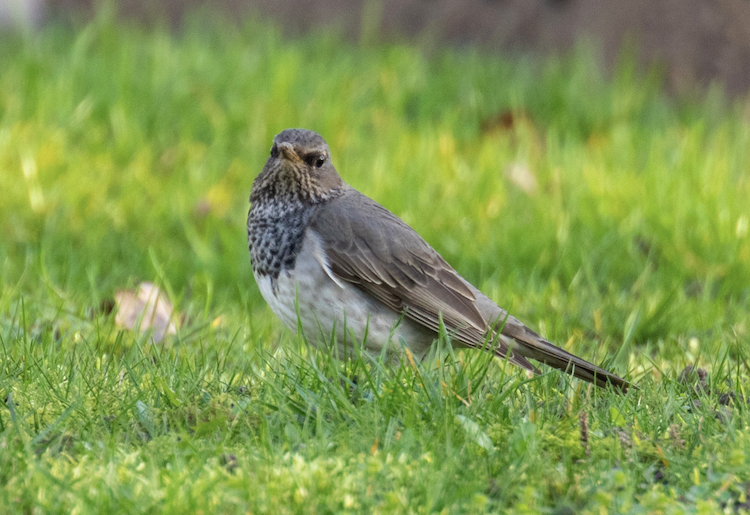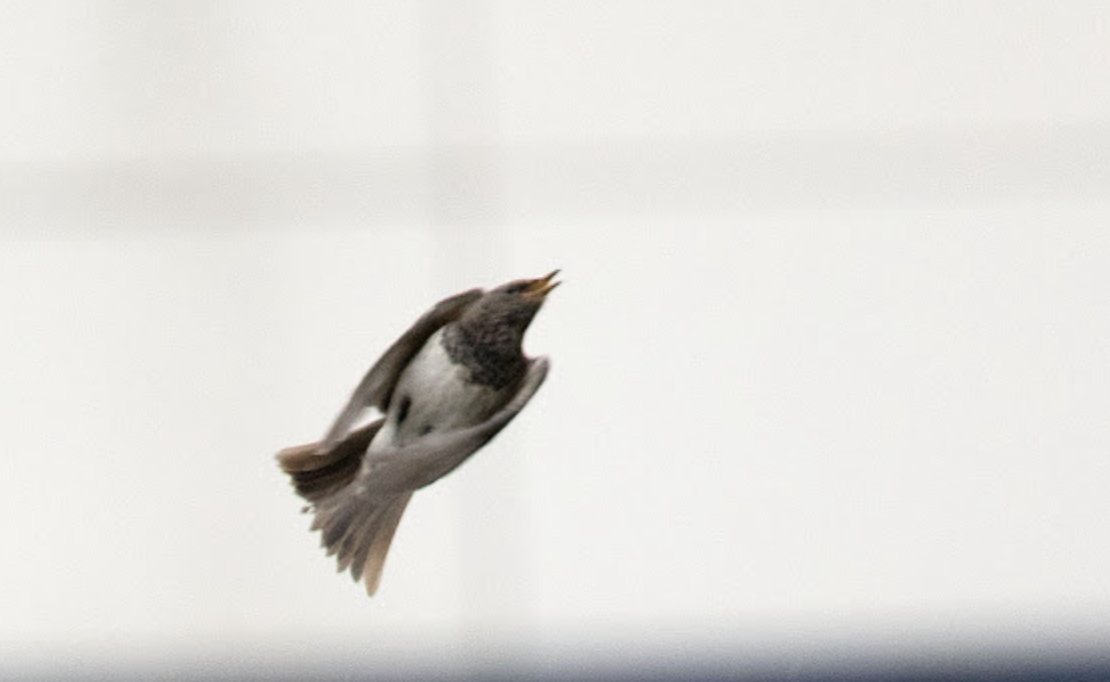Black-throated Thrush Turdus atrogularis
Vagrant. Eastern European Russia to north-central Siberia, north-west Mongolia.
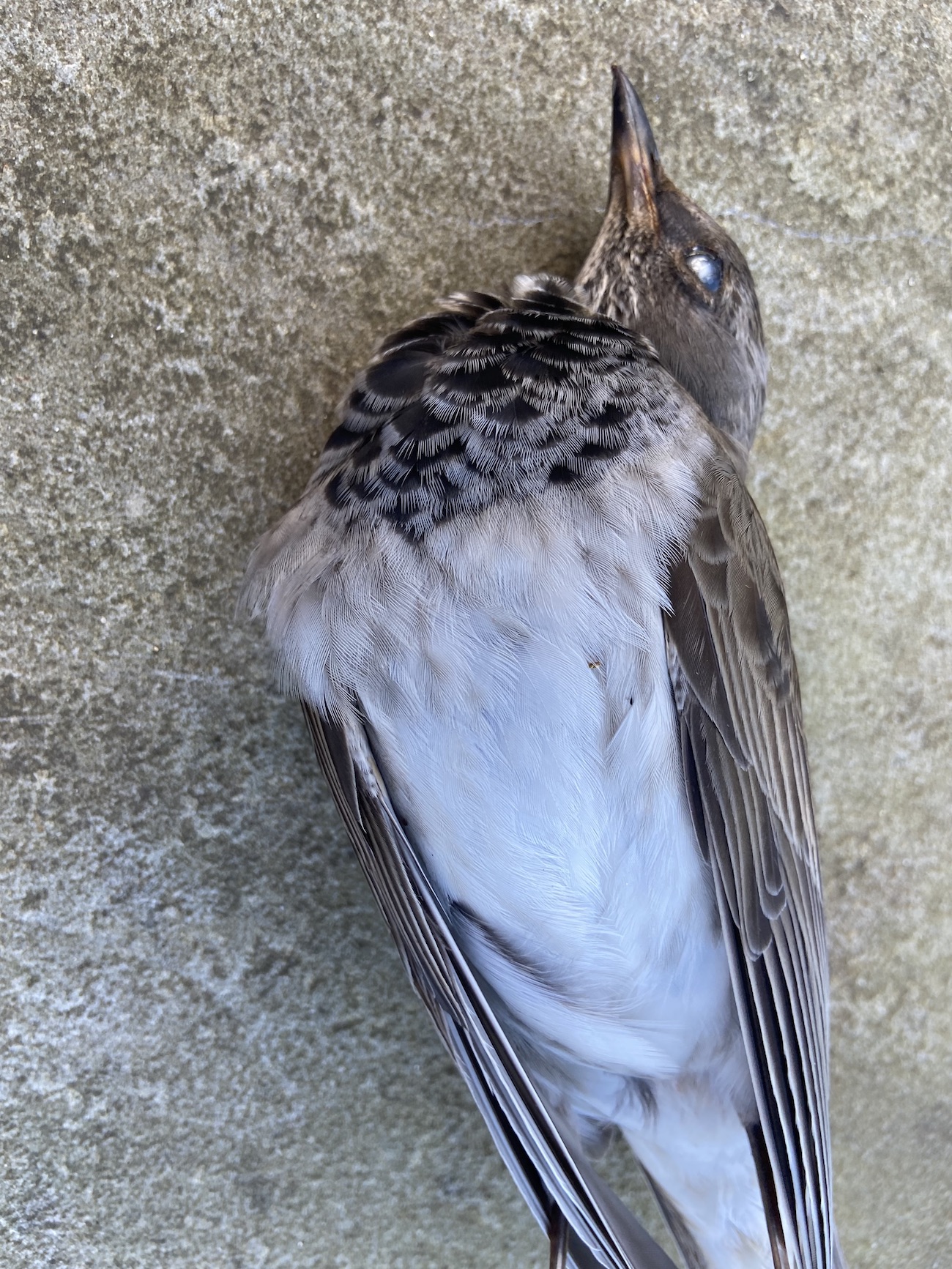
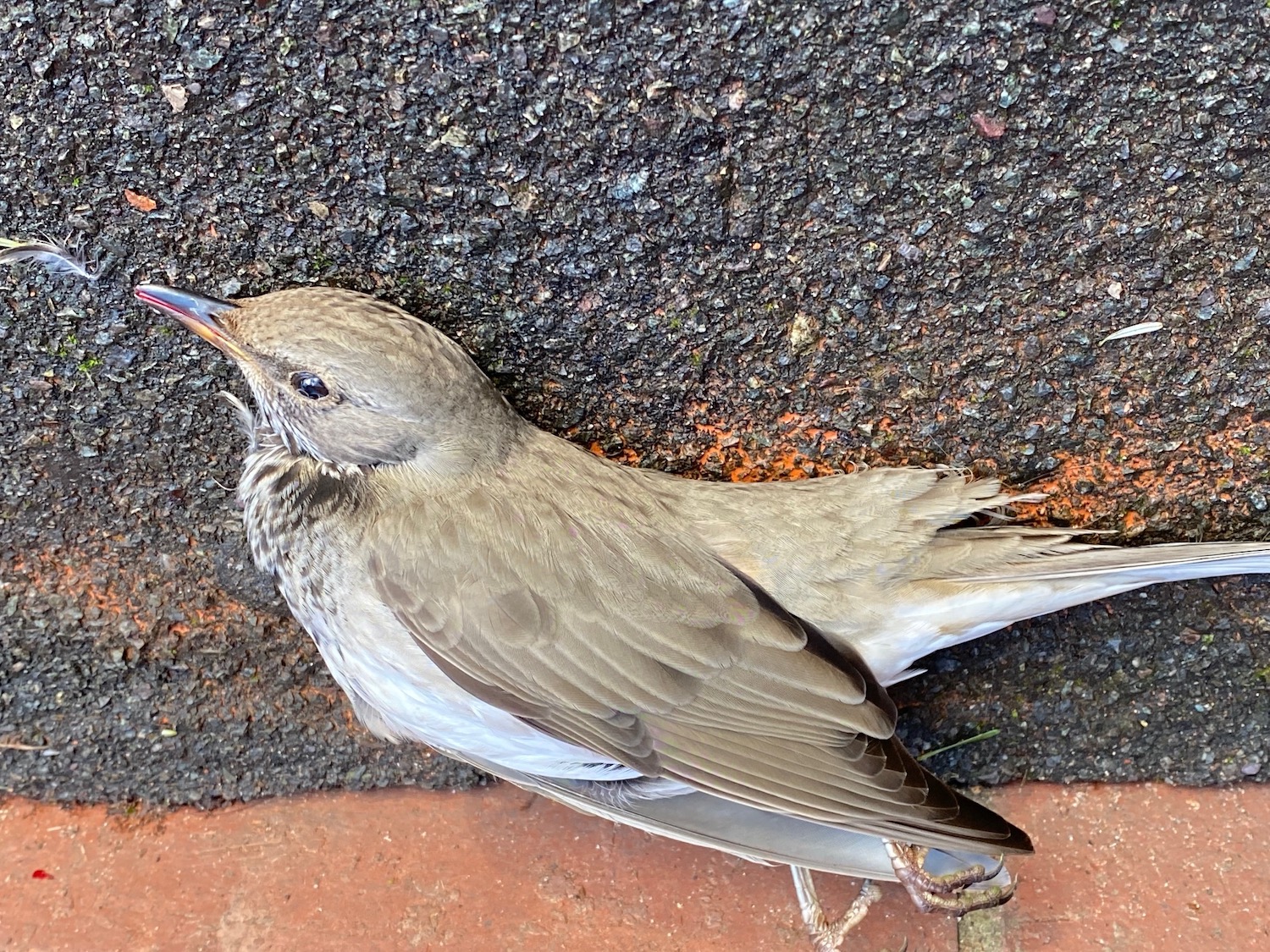
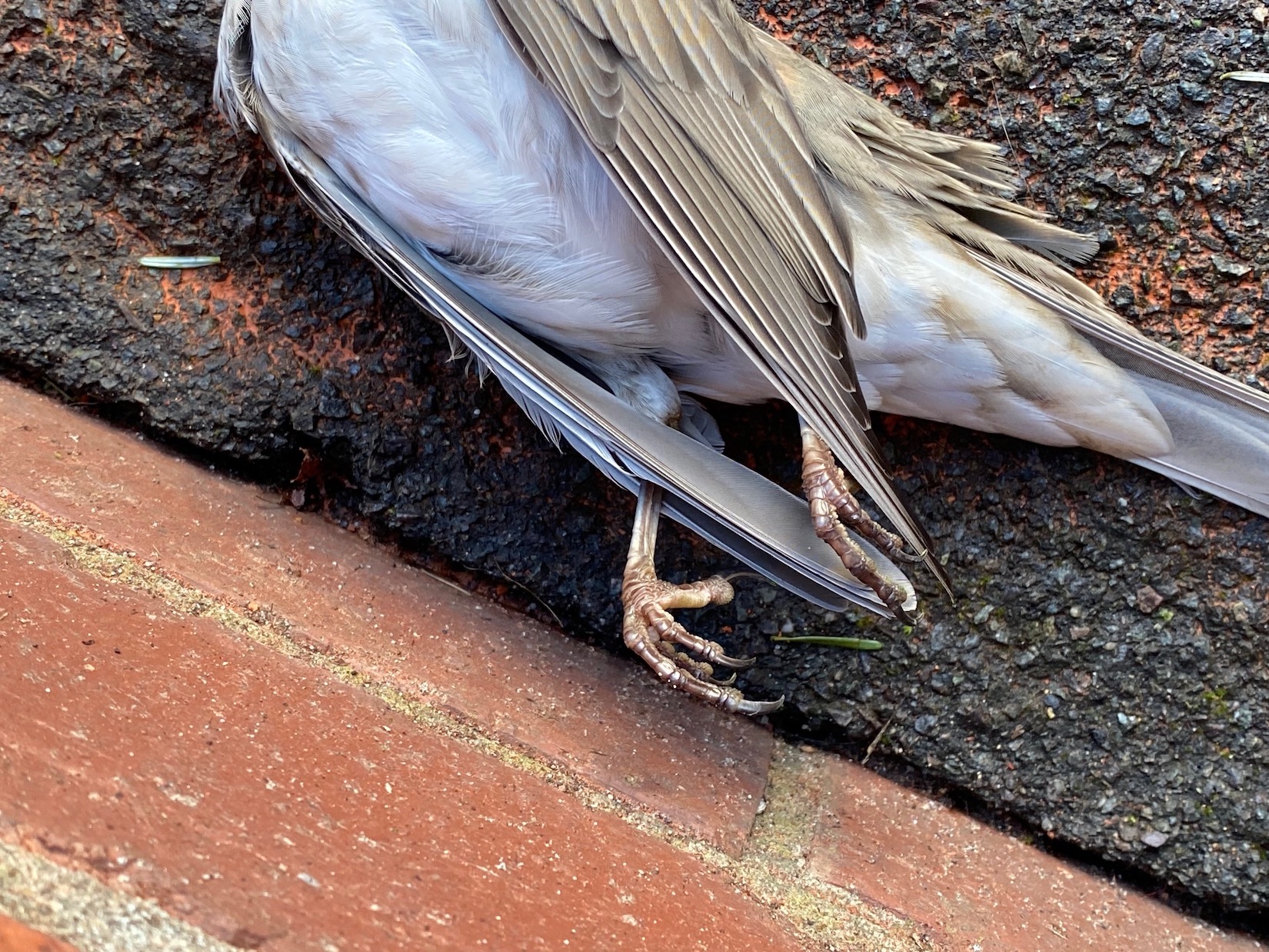
Black-throated thrush, 2CY male, found dead in Bailgate, Lincoln January 4th 2022 (Phil Hyde).
Regrettably the thrush found in Grimsby January-April 2020, initially thought by most observers to be a Black-throated Thrush was deemed to be a hybrid Black-throated x Red-throated Thrush after a review by the BBRC. This review of the rare Eastern Palaearctic thrushes also included discussion with other European national rare bird record committees. The original BBRC view on hybrids was published in British Birds, 2017 (110: 109-121) https://www.britishbirds.co.uk/journal/article/hybrids-intergrades-and-bbrc. The approach was heavily influenced by a review of Finnish records by the Rarities Committee of Birdlife Finland https://share.google/6NnNUZlBZvpFeXyzz
The first record of this handsome thrush therefore becomes the specimen which was unfortunately found freshly dead on Bailgate in the centre of Lincoln January 4th 2022. The skin is in the British Natural History Museum. On dissection they reported that the bird appeared in excellent condition. It is presumed that the bird had flown into a window as there were no external signs at all of injury. The person entrusted with mounting the skin had a particular interest in bird hybridisation in general and he examined the skin thoroughly. He reported that there was no sign of any rufous colouration in the remigers or rectrices.
These thrushes breed in a variety of habitats: pure coniferous forests along rivers and streams, sparse dry woods, larch (Larix) clumps, semi-open willow (Salix) scrub, groves of poplar (Populus) and birch (Betula), buckthorn (Rhamnus) thickets and wooded bogs, to 2200 m. They depart from mid-Aug and winter from Iraq and Arabia across southern Asia. There have been 89 British records, 1950-2021. With seven previous records in Yorkshire, this was an overdue find, albeit not easy to do among the 1000s of commoner thrushes arriving on the coast every autumn.
| Site | First date | Last date | Count | Notes |
| Lincoln | 04/01/2022 | - | 1 | 2CY male found dead on Bailgate, Lincoln; now in Natural History Museum, London. |
Finder’s Report: Black Throated x Red-throated Thrush, Grimsby, 30th January-2nd April 2020.
by Josh Forrester.
Note: this account is based on the article which first appeared in Lincolnshire Bird Report 2020. The BBRC report for 2020 noted that this bird posed an interesting dilemma for the Committee. It showed a hint of warm brown to the basal edges of the outer tail feathers. Ordinarily, shades of red in the tail would point to hybrid influence by Red-throated T. ruficollis or even, more rarely, Naumann’s Thrush T. naumanni (see Brit. Birds 110: 116–121). However, in a review of British records of Black-throated Thrushes with sufficient details, the identity was rescinded and along with two Scottish records, deemed to be a hybrid.
Black-throated x Red-throated Thrush hybrid, Grimsby, January 2020 (Photographs © Graham Catley)
Circumstances and description
I work at the Grimsby Institute and as I live close to work, I often walk home for lunch at midday. There is some open ground with a stand of trees on the south-eastern boundary of the college. In the winter I usually walk on the pavement around this area, but it had been dry, so at lunchtime on Jan 30th I decided to cut across the grass. About halfway across the grass, a thrush on the ground caught my eye. In the winter, this area plays host to the occasional ground feeding Mistle Thrush (Turdus viscivorus) and Song Thrush (Turdus philomelos), but it wasn’t either of these. Fieldfare (Turdus pilaris) briefly crossed my mind due to the colour and shape but something about this bird was different. When I first saw the thrush, it had its back to me and was feeding on worms amongst a group of Black-headed Gulls (Chroicocephalus ridibundus). It was strikingly pale underneath. I moved towards a tree to obscure myself somewhat and tried to move closer. The bird flew in to a tree but returned to the ground shortly thereafter and now it was facing me. The clear contrast between its black throat markings and its creamy, grey breast made me say aloud: Black-throated Thrush!
This species was never on my radar and certainly not something I would have expected in such a mundane place. There were two things that helped me make this identification:
- My local patch is about a mile south-east (as the thrush flies*) of my workplace. Each year I spend time in the spring and autumn on the search for Ring Ouzel (Turdus torquatus) as well as counting passage Fieldfare, Redwing (Turdus iliacus) wintering Blackbirds (Turdus merula) and continental Song Thrushes. I’m quite familiar with the Turdidae of Grimsby.
- A long-staying, adult male Black-throated Thrush had been present at Whipsnade Zoo in Bedfordshire since December 11th 2019. Photos of this bird had done the rounds on Twitter, so that was in my mind.
Although I was shaking with excitement, I managed to obtain some record shots and videos with my iPhone and then got in touch with some local birders. I received reassurance that it “looked good for Black-throated Thrush” and that it would be a first for Lincolnshire. Once I knew other birders were inbound, I went home to grab my binoculars and returned to meet with Chris Atkin and Howard Bunn. The bird spent a significant amount of time in the upper tree canopy and gave only brief views. Eventually it flew some distance away across Laceby Road and was observed to have a distinctive undulating flight-pattern associated with larger thrushes. Unfortunately, due to work obligations, I was unable to spend much more time that afternoon observing the thrush. I understand that it did return – providing reasonable views and photographic opportunities to those who had attended that afternoon. Graham Catley – the don of Lincolnshire birding – suggested that the bird was a 1st-winter male. The ensuing twitch over the weekend of 1st / 2nd of February (and the weeks following) provided ample opportunities for birders from near and far to connect with this obliging Siberian delight. It remained in the area until it was last sighted on April 2nd.
( *Sadly, I do not believe the thrush visited my patch during its regular perambulations of the area.)
Black-throated x Red-throated Thrush – some plumage features and analysis
During its stay, some observers commented on the warm brown colouration visible at the base of the tail in this bird - the tail feathers are blackish-grey but with a very faint and restricted hint of rufous at the base of the outermost feather on the right side of the bird visible in the flight shot above.
| Site | First date | Last date | Count | Notes |
| Grimsby | 30/01/2020 | 02/04/2020 | 1 | 2CY male - on review by BBRC now deemed to be a Black-throated x Red-throated Thrush hybrid (British Birds 118: 493-560, 2025) |
(Updated with reference to the new Birds of Lincolnshire (2021) December 2022; reviewed and updated October 2025)


